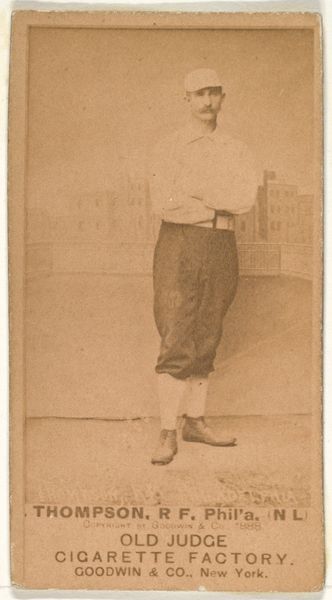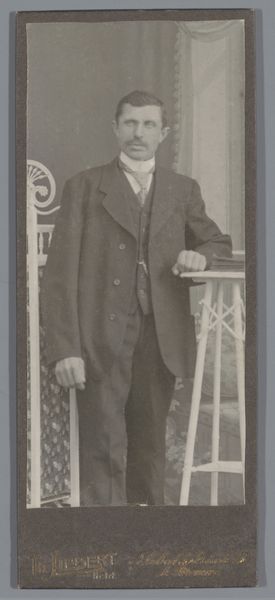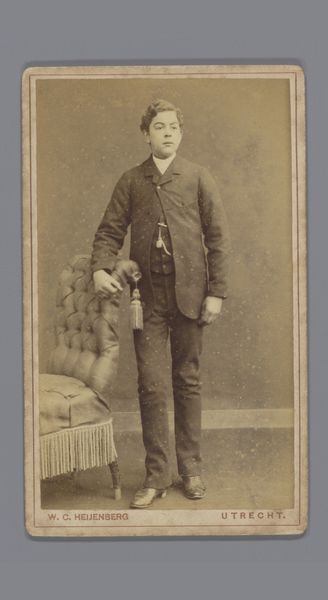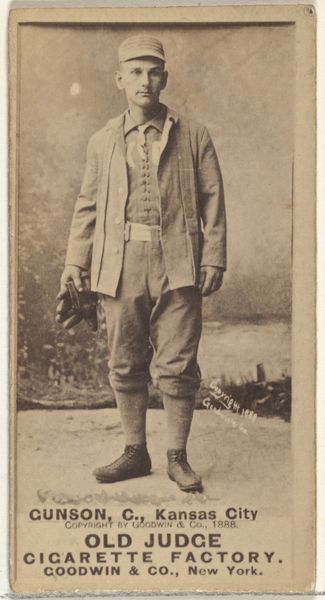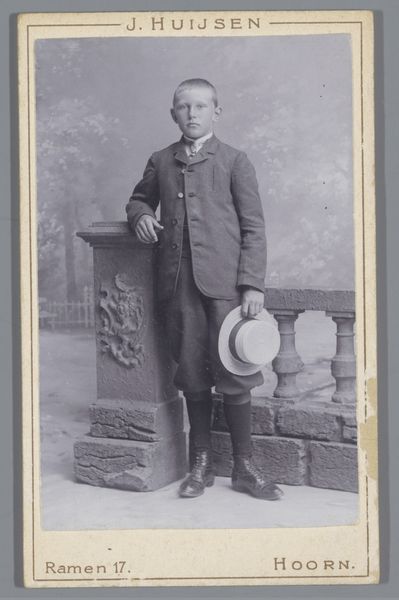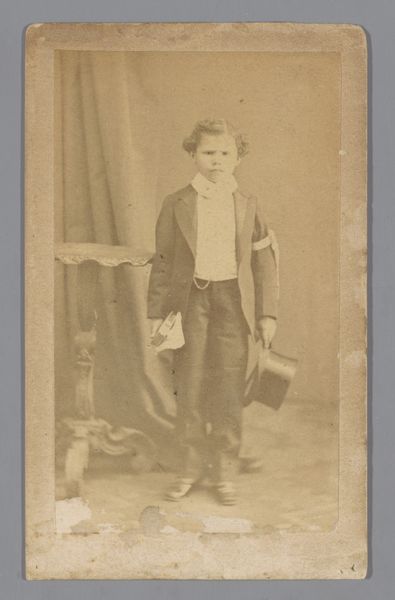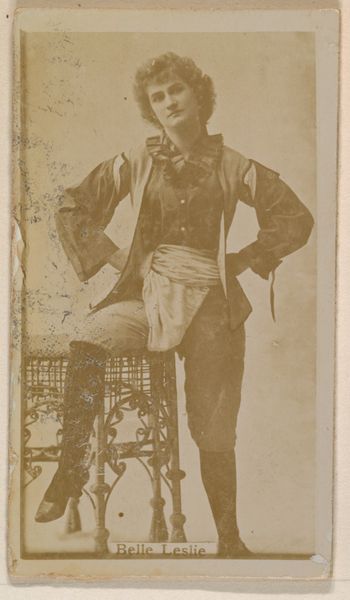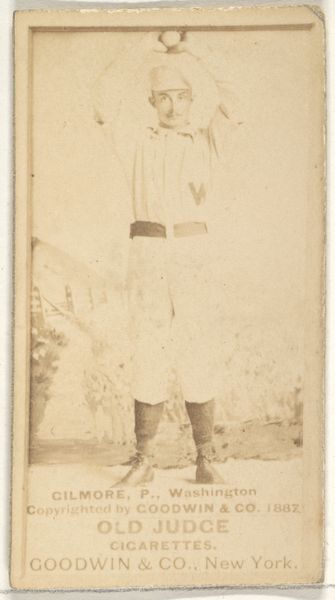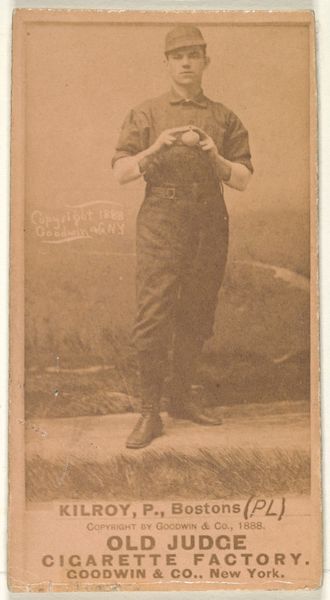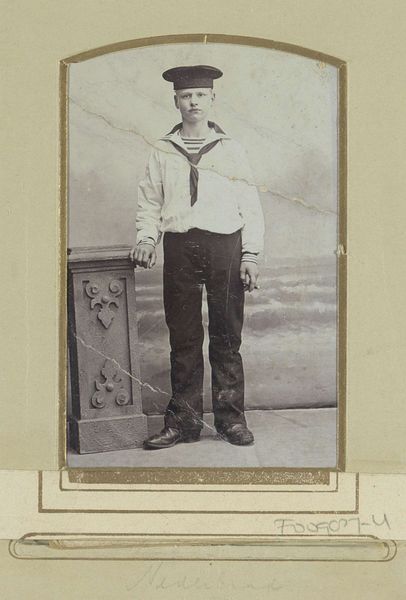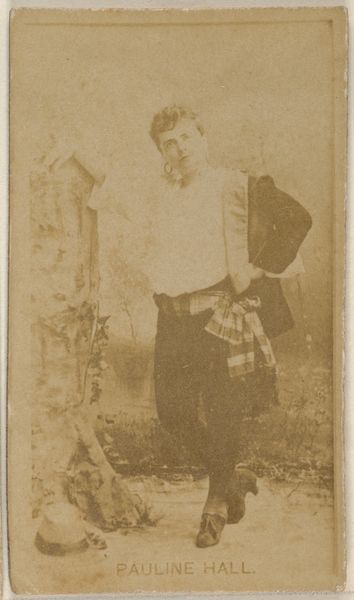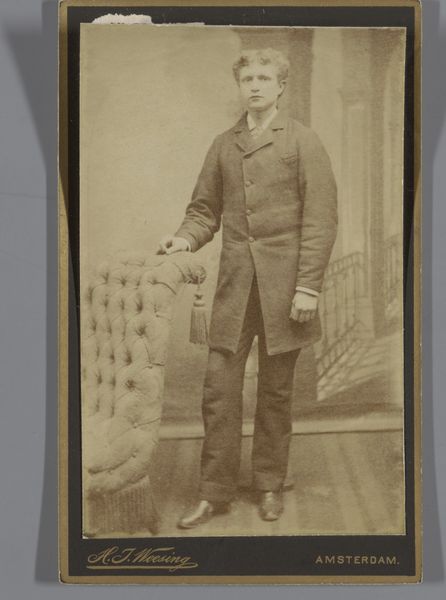
-Right arm cut off by a veneering saw in box factory- 1907
0:00
0:00
gelatin-silver-print, photography, gelatin-silver-print
#
portrait
#
gelatin-silver-print
#
outdoor photograph
#
black and white format
#
photography
#
historical photography
#
gelatin-silver-print
#
monochrome photography
#
ashcan-school
#
united-states
#
monochrome
Dimensions: 5 3/8 x 2 7/16 in. (13.65 x 6.19 cm) (image, sheet)
Copyright: No Copyright - United States
Editor: So here we have Lewis Hine’s 1907 gelatin silver print, with the straightforward but arresting title "-Right arm cut off by a veneering saw in box factory-". It’s a powerful image, largely due to its matter-of-fact depiction of such a traumatic event. What aspects of the piece strike you most forcefully? Curator: Well, immediately I consider the industrial context that makes the *making* of this photograph possible. This isn’t just a portrait; it’s a document born from the very same technological advancements that led to this child's injury. Think about the means of production here - the factory, the saw, and the photographic process itself are all interconnected within a specific economic system. Editor: That's interesting. It makes me think about how Hine’s work intersects with reform movements. Curator: Precisely. Hine strategically deployed photography as a tool for social change, shining a light on exploitative labor practices. The gelatin silver print, as a relatively reproducible and accessible medium, becomes an essential component in disseminating his message and calling attention to the human cost of industrialization. The banality of the title underscores that this type of horrific event was quite common. Who profited from it? Where did the boxes he manufactured end up? Editor: So you see the photographic materials as almost implicated in the system that harmed this boy? Curator: Exactly. The photograph becomes a piece of evidence, highlighting both the physical toll on the laborer and the ethical responsibilities of industry. What materials do we consume, and under what conditions are they produced? These are the questions that this seemingly simple photograph forces us to confront. Editor: This really shifted how I see this photograph. I was focusing on the boy, but now I am seeing how the very process of its making and its dissemination speaks to something larger about labor and materials. Thanks! Curator: And it’s also crucial to remember that as viewers, we also become part of this cycle of consumption and observation. Considering *our* role, within the materials on display within this gallery, becomes essential.
Comments
minneapolisinstituteofart almost 2 years ago
⋮
Lewis Hine was a documentary photographer, educator, and social reformer. Trained in sociology, Hine taught at the progressive Ethical Culture School in New York City before turning his attention to photography. As a photographer for the National Child Labor Committee (NCLC), Hine traveled the United States to document children in unsafe working conditions in factories, mines, fields, and city streets. Over ten years, he created an indelible record of the human cost of an exploitative labor market, documenting the tired faces of children at the end of their shifts, or even children mutilated by industrial machinery. These disturbing photographs were used in publications and presentations created by Hine and the NCLC, and ultimately promoted sweeping policy changes designed to protect children.
Join the conversation
Join millions of artists and users on Artera today and experience the ultimate creative platform.
